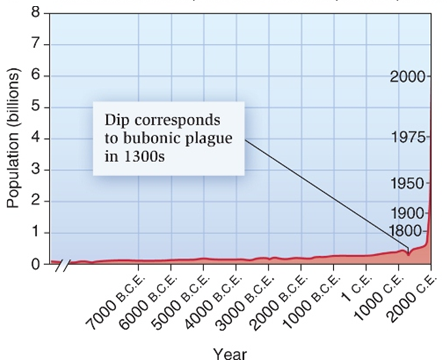Sensory transduction requires:
A. a change in membrane potential.
B. reaction of a receptor protein with a
stimulus.
C. alteration of the conformation of a channel
protein.
D. All of the answer options are correct.
D
You might also like to view...
Examine the figure above. What type of pattern did the human population exhibit through most of its history (prior to the 1700s)?

A. logistic growth
B. exponential growth
C. zero growth (equilbrium)
D. negative growth
Mesophyll consist of _____
a. waxes and cutin c. photosynthetic cells b. lignified cell walls d. cork but not bark
Sodium dodecyl sulfate (SDS) is a detergent commonly added to protein samples before gel electrophoresis. The purpose of the negatively charged SDS is to neutralize the charges and denature the protein to remove secondary structures
Thus, the proteins can be separated on a gel based solely on what parameter?
Fine structure genetic maps of the human genome are now constructed using either restriction fragment length polymorphisms (RFLPs) which are found about 1/6000 bp
or single nucleotide polymorphisms (SNPs) which are found about 1/1330 bp. Would you expect RFLPs or SNPs to be located only in the coding regions of genes or in noncoding and repetitive sequences as well? What will be an ideal response?